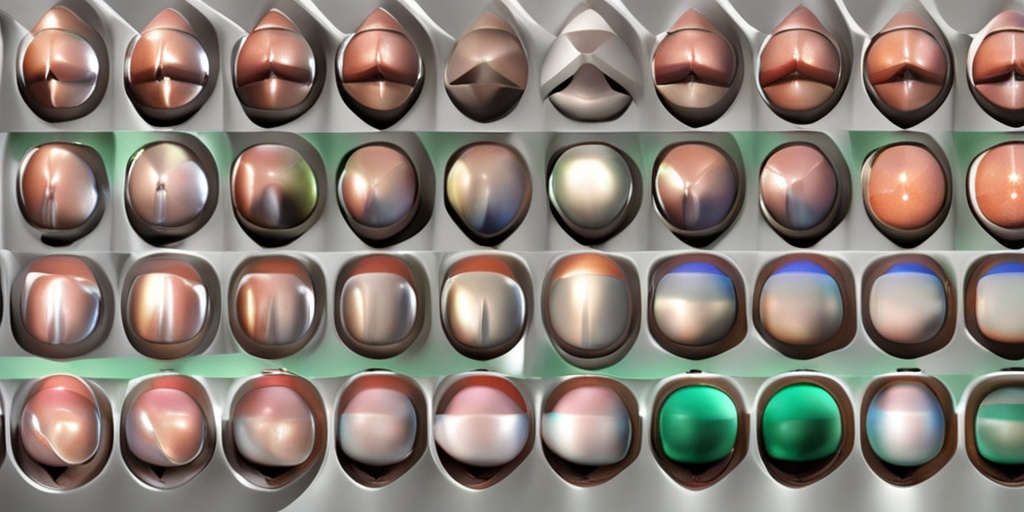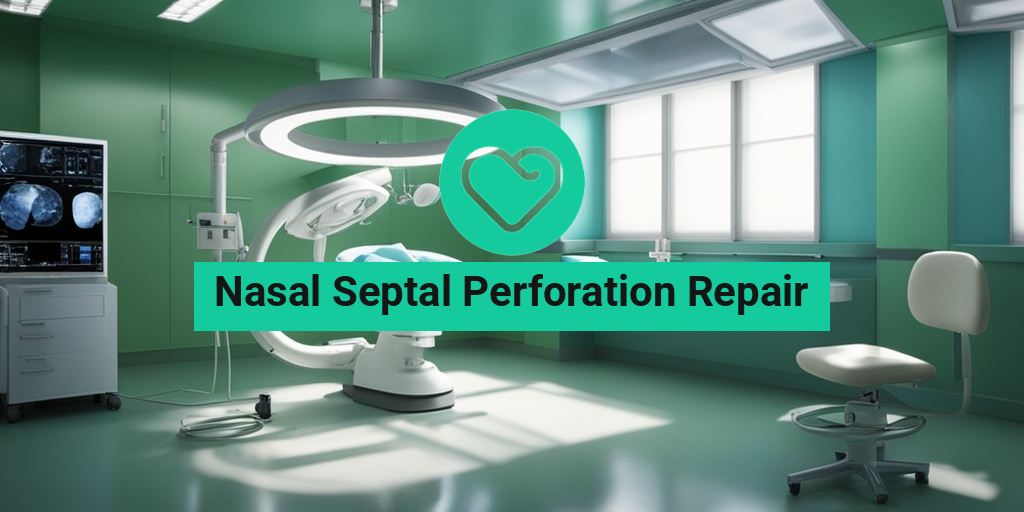What is Nasal Septal Perforation?
Nasal septal perforation, also known as a hole in the nasal septum, is a condition where there is a hole or a tear in the thin wall of cartilage and bone that separates the two sides of the nasal passages. This wall, called the nasal septum, plays a crucial role in supporting the nose and directing airflow. When a hole develops in the septum, it can cause a range of symptoms and complications.
Causes of Nasal Septal Perforation
The causes of nasal septal perforation can vary widely. Some common causes include:
- Trauma: A blow to the nose or face can cause a tear in the septum.
- Surgery: Complications during nasal surgery, such as a septoplasty or rhinoplasty, can result in a perforation.
- Infections: Certain infections, like tuberculosis or syphilis, can cause a hole to develop in the septum.
- Cocaine use: Long-term use of cocaine can cause damage to the nasal passages and septum, leading to a perforation.
- Anatomical abnormalities: Some people may be born with a deviated septum or other anatomical abnormalities that can increase the risk of a perforation.
In some cases, the cause of the perforation may not be known.
Nasal Septal Perforation Symptoms
The symptoms of nasal septal perforation can vary in severity and may include:
- Nasal congestion: One or both sides of the nose may become congested, making it difficult to breathe.
- Nasal discharge: A perforation can cause a persistent, thick, and yellowish discharge from the nose.
- Whistling or nasal sounds: Air passing through the hole can cause a whistling or nasal sound.
- Crusting and bleeding: The edges of the perforation can become crusty and bleed, leading to discomfort and pain.
- Loss of smell: In some cases, a perforation can affect the sense of smell.
- Facial pain and pressure: Pain and pressure in the face, particularly in the nose and forehead, can occur.
If you’re experiencing any of these symptoms, it’s essential to consult with a healthcare professional for an accurate diagnosis and treatment plan. In some cases, nasal septal perforation repair may be necessary to alleviate symptoms and improve quality of life.
👃️ Stay tuned for the next part of this article, where we’ll dive deeper into the diagnosis and treatment options for nasal septal perforation!

Causes of Nasal Septal Perforation
Nasal septal perforation, a hole in the thin wall of cartilage and bone that separates the two sides of the nasal passages, can occur due to various reasons. Understanding the causes of nasal septal perforation is essential to prevent it and seek timely treatment if it occurs.
Trauma to the Nose
A blow to the nose or a nasal fracture can cause a perforation in the nasal septum. This type of trauma can occur due to a car accident, a fall, or a physical assault. The force of the impact can cause the nasal bones to break, leading to a hole in the septum.
Nasal Surgery
Sometimes, nasal surgery, such as a septoplasty or rhinoplasty, can result in a nasal septal perforation. This is usually due to an error during the surgical procedure or an unexpected complication.
Nasal Piercing
Getting a nasal piercing can increase the risk of developing a nasal septal perforation. If the piercing is not done properly or if the jewelry is not cleaned regularly, it can lead to an infection that can cause a hole in the septum.
Chronic Inflammation
Chronic inflammation in the nasal passages, such as in cases of chronic rhinitis or sinusitis, can weaken the nasal septum and cause a perforation over time.
Cocaine Use
The use of cocaine can cause a nasal septal perforation due to the vasoconstrictive properties of the drug. Cocaine can reduce blood flow to the nasal tissues, leading to tissue death and a hole in the septum.
Risk Factors for Nasal Septal Perforation
Certain individuals are more prone to developing a nasal septal perforation due to various risk factors. Knowing these risk factors can help you take preventive measures to reduce your risk of developing this condition.
Family History
If you have a family history of nasal septal perforation, you may be more likely to develop the condition. This is because some genetic conditions, such as hereditary hemorrhagic telangiectasia, can increase the risk of nasal septal perforation.
Previous Nasal Trauma
If you have a history of nasal trauma, such as a broken nose, you may be more likely to develop a nasal septal perforation.
Chronic Nasal Infections
Chronic nasal infections, such as chronic rhinitis or sinusitis, can increase the risk of developing a nasal septal perforation.
Nasal Deformities
Nasal deformities, such as a deviated septum, can increase the risk of developing a nasal septal perforation.
By understanding the causes and risk factors of nasal septal perforation, you can take steps to prevent it and seek timely treatment if you experience any symptoms. If you suspect you have a nasal septal perforation, consult a healthcare professional for proper diagnosis and treatment. 🏥

Diagnosing Nasal Septal Perforation
Diagnosing nasal septal perforation typically involves a combination of physical examination, medical history, and diagnostic tests. If you’re experiencing symptoms such as nasal congestion, loss of smell, or nasal pressure, it’s essential to consult an ear, nose, and throat (ENT) specialist or a primary care physician for an accurate diagnosis.
Physical Examination
During the physical examination, your doctor will typically perform a nasal endoscopy to visualize the inside of your nasal passages. This involves using a flexible tube with a camera and light on the end to examine the nasal septum and surrounding tissues. The doctor may also perform a nasal speculum examination to inspect the nasal cavity.
Medical History
Your doctor will ask you questions about your medical history, including any previous nasal trauma, surgeries, or conditions that may have contributed to the development of a nasal septal perforation. Be prepared to discuss any symptoms you’re experiencing, such as nasal congestion, bleeding, or difficulty breathing.
Diagnostic Tests
In some cases, your doctor may order diagnostic tests to confirm the diagnosis of nasal septal perforation. These may include:
- Rhinometry: This test measures the airflow through your nasal passages to assess nasal function.
- Nasal endoscopy with decongestant: This test involves spraying a decongestant into your nasal passages to reduce swelling and allow for a clearer view of the nasal septum.
- CT or MRI scans: These imaging tests may be ordered to rule out other conditions that may be causing your symptoms, such as a deviated septum or nasal polyps.
Once the diagnosis is confirmed, your doctor will discuss treatment options with you. In some cases, nasal septal perforation repair surgery may be necessary to close the perforation and alleviate symptoms.
Nasal Septal Perforation Treatment Options
Treatment for nasal septal perforation depends on the size and location of the perforation, as well as the severity of symptoms. Your doctor may recommend one or more of the following treatment options:
Conservative Management
In some cases, conservative management may be sufficient to manage symptoms. This may include:
- Nasal saline irrigation: Rinsing your nasal passages with a saline solution can help reduce nasal congestion and promote healing.
- Nasal decongestants: Over-the-counter or prescription decongestants can help reduce nasal congestion and alleviate symptoms.
- Nasal lubricants: Applying nasal lubricants, such as petroleum jelly or nasal gels, can help soothe and moisturize the nasal passages.
Surgical Repair
Surgical repair is often necessary for larger perforations or those that are causing significant symptoms. The goal of surgery is to close the perforation and restore normal nasal function. There are several surgical techniques that may be used, including:
- Temporalis fascia grafting: This involves using a graft from the temporalis muscle to close the perforation.
- Septal mucoperichondrial flap: This technique involves creating a flap from the septal mucosa and perichondrium to close the perforation.
- Other grafting materials: In some cases, other grafting materials, such as cartilage or bone, may be used to close the perforation.
Surgical repair is typically performed under general anesthesia or local anesthesia with sedation. The procedure can take several hours, and recovery time varies depending on the complexity of the surgery.
It’s essential to discuss your treatment options with your doctor to determine the best course of action for your specific case. With proper treatment, it’s possible to alleviate symptoms and improve nasal function. 🏥

Surgical Repair of Nasal Septal Perforation
Nasal septal perforation repair surgery is a common treatment option for individuals suffering from a hole in the nasal septum. The nasal septum is the thin wall of cartilage and bone that separates the two sides of the nasal passages. When a hole develops in this wall, it can cause a range of symptoms, including nasal congestion, difficulty breathing, and nasal discharge.
Why Surgical Repair is Necessary
In some cases, nasal septal perforation can be asymptomatic, meaning it doesn’t cause any noticeable symptoms. However, in many cases, the perforation can lead to complications, such as nasal crusting, bleeding, and difficulty breathing. If left untreated, the perforation can also lead to further complications, such as septal abscesses or nasal deformities.
The Surgical Procedure
The surgical procedure for nasal septal perforation repair typically involves a combination of techniques, including:
- Septoplasty: This involves straightening the nasal septum to improve breathing and reduce symptoms.
- Turbinate reduction: This involves reducing the size of the turbinate bones in the nasal passages to improve airflow.
- Perforation closure: This involves closing the hole in the nasal septum using a variety of techniques, including suturing, grafting, or using a nasal septal button.
The surgical procedure is usually performed under general anesthesia or local anesthesia with sedation, depending on the complexity of the procedure and the individual’s overall health.
Types of Grafts Used in Nasal Septal Perforation Repair
In some cases, a graft may be necessary to close the perforation. There are several types of grafts that can be used, including:
- Temporalis fascia graft: This involves using a piece of tissue from the temporal region of the head to close the perforation.
- Cartilage graft: This involves using a piece of cartilage from the ear or ribcage to close the perforation.
- Synthetic grafts: This involves using a synthetic material, such as a nasal septal button, to close the perforation.
The type of graft used will depend on the size and location of the perforation, as well as the individual’s overall health and medical history.
—
Non-Surgical Treatment for Nasal Septal Perforation
In some cases, nasal septal perforation may not require surgical repair. Non-surgical treatments can be effective in managing symptoms and improving quality of life.
Nasal Saline Irrigation
Nasal saline irrigation is a simple and effective way to manage symptoms of nasal septal perforation. This involves rinsing the nasal passages with a saline solution to remove debris and reduce inflammation.
Nasal Decongestants and Steroids
Nasal decongestants and steroids can be used to reduce nasal congestion and inflammation. These medications can be prescribed by a doctor or purchased over-the-counter.
Nasal Septal Buttons
Nasal septal buttons are small devices that can be inserted into the nasal passages to close the perforation. These devices are usually made of silicone or other synthetic materials and can be removed when the perforation has healed.
Lifestyle Changes
There are several lifestyle changes that can help manage symptoms of nasal septal perforation, including:
- Avoiding nasal irritants, such as tobacco smoke or strong chemicals.
- Using a humidifier to add moisture to the air and reduce nasal dryness.
- Avoiding blowing the nose too forcefully, which can exacerbate the perforation.
While non-surgical treatments can be effective in managing symptoms, they may not be suitable for everyone. In some cases, surgical repair may be necessary to fully close the perforation and restore normal nasal function.

Frequently Asked Questions about Nasal Septal Perforation Repair
What is Nasal Septal Perforation Repair?
Nasal septal perforation repair is a surgical procedure to close a hole in the nasal septum, which is the thin wall of cartilage and bone that separates the two sides of the nasal passages.
What are the Symptoms of Nasal Septal Perforation?
Common symptoms of nasal septal perforation include nasal congestion, difficulty breathing, nasal pressure, and nasal discharge. In some cases, patients may experience nosebleeds, crusting, or whistling sounds during breathing.
What Causes Nasal Septal Perforation?
Nasal septal perforation can be caused by various factors, including trauma to the nose, previous nasal surgery, cocaine use, and certain medical conditions such as Wegener’s granulomatosis.
How is Nasal Septal Perforation Repair Performed?
The surgical procedure typically involves making an incision inside the nostril to access the nasal septum. The surgeon will then close the perforation using a graft or flap, which may be taken from the nasal septum itself or from another area of the body, such as the temporalis fascia.
What is the Recovery Time for Nasal Septal Perforation Repair?
The recovery time for nasal septal perforation repair varies depending on the complexity of the procedure and the individual patient’s healing process. Generally, patients can expect to return to their normal activities within 1-2 weeks after surgery.
Is Nasal Septal Perforation Repair Painful?
The procedure is usually performed under general anesthesia or local anesthesia with sedation, which minimizes discomfort during the surgery. After the procedure, patients may experience some nasal congestion, pressure, and discomfort, which can be managed with pain medication and nasal decongestants.
How Much Does Nasal Septal Perforation Repair Cost?
The cost of nasal septal perforation repair varies depending on the location, surgeon’s fees, and insurance coverage. It’s essential to consult with a specialist to determine the exact cost of the procedure.
Can Nasal Septal Perforation Repair be Done with Other Procedures?
In some cases, nasal septal perforation repair may be performed in conjunction with other procedures, such as septoplasty, turbinate reduction, or sinus surgery, to address related nasal and sinus issues.
What are the Risks and Complications of Nasal Septal Perforation Repair?
As with any surgical procedure, nasal septal perforation repair carries some risks and complications, including infection, bleeding, nasal asymmetry, and scarring. It’s crucial to discuss the potential risks and benefits with a qualified specialist.
How Do I Find a Specialist for Nasal Septal Perforation Repair?
To find a specialist for nasal septal perforation repair, you can ask for referrals from your primary care physician, ENT specialist, or other healthcare professionals. You can also search online for board-certified otolaryngologists or facial plastic surgeons in your area.
What is the Success Rate of Nasal Septal Perforation Repair?
The success rate of nasal septal perforation repair varies depending on the size and location of the perforation, as well as the surgeon’s expertise. In general, the success rate is high, with most patients experiencing significant improvement in their symptoms and quality of life.
Can Nasal Septal Perforation Repair be Done for Cosmetic Reasons?
While nasal septal perforation repair is primarily performed to address functional issues, it can also have cosmetic benefits, such as improving the appearance of the nose and enhancing breathing.
Is Nasal Septal Perforation Repair Covered by Insurance?
Insurance coverage for nasal septal perforation repair varies depending on the policy and the underlying cause of the perforation. It’s essential to consult with your insurance provider to determine the extent of coverage.
What is the Follow-up Care for Nasal Septal Perforation Repair?
After the procedure, patients will need to follow a post-operative care plan, which may include nasal decongestants, antibiotics, and pain medication. Follow-up appointments with the surgeon are crucial to monitor the healing process and address any concerns or complications.




